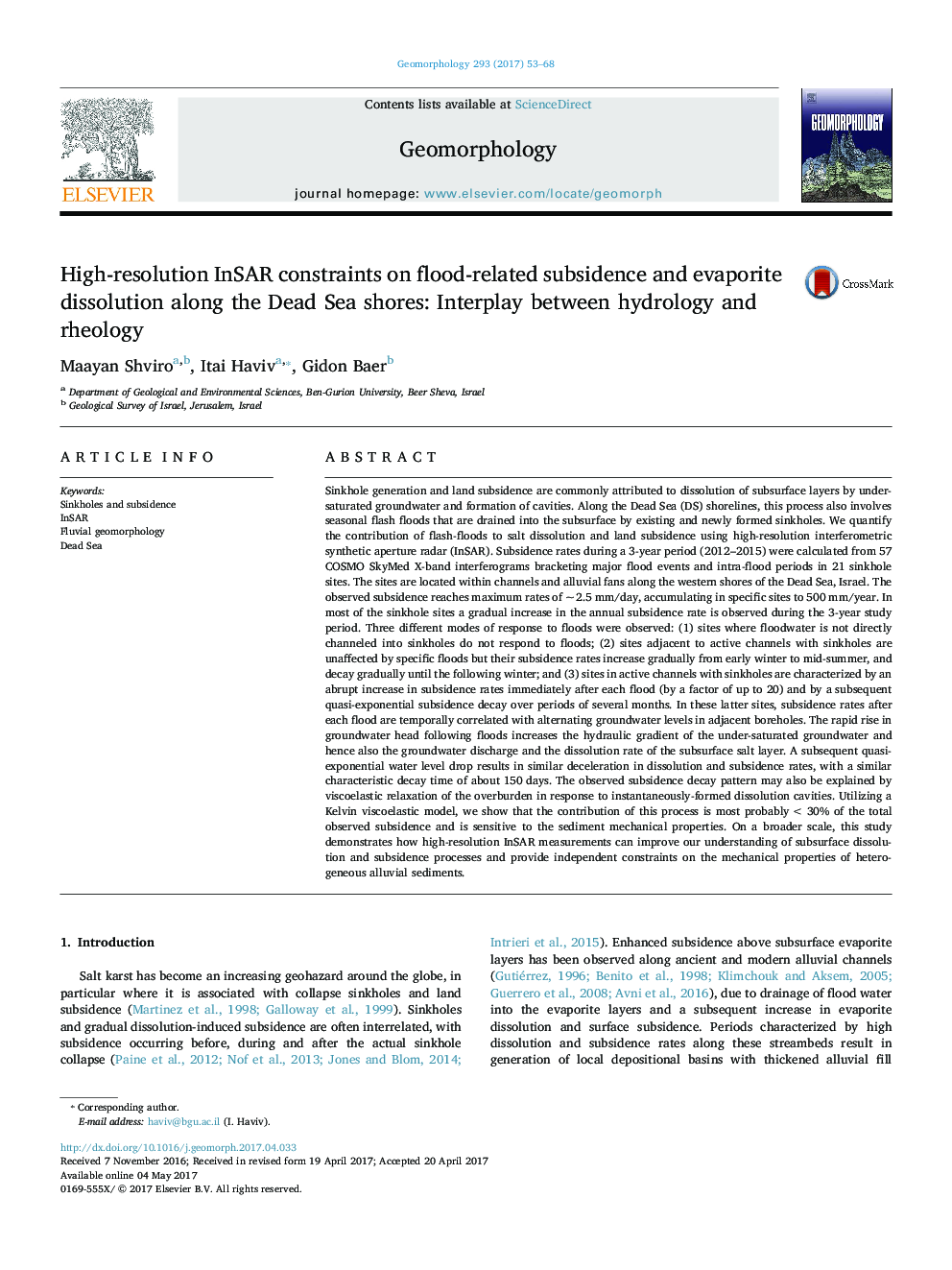| Article ID | Journal | Published Year | Pages | File Type |
|---|---|---|---|---|
| 5780839 | Geomorphology | 2017 | 16 Pages |
Abstract
Sinkhole generation and land subsidence are commonly attributed to dissolution of subsurface layers by under-saturated groundwater and formation of cavities. Along the Dead Sea (DS) shorelines, this process also involves seasonal flash floods that are drained into the subsurface by existing and newly formed sinkholes. We quantify the contribution of flash-floods to salt dissolution and land subsidence using high-resolution interferometric synthetic aperture radar (InSAR). Subsidence rates during a 3-year period (2012-2015) were calculated from 57 COSMO SkyMed X-band interferograms bracketing major flood events and intra-flood periods in 21 sinkhole sites. The sites are located within channels and alluvial fans along the western shores of the Dead Sea, Israel. The observed subsidence reaches maximum rates of ~Â 2.5Â mm/day, accumulating in specific sites to 500Â mm/year. In most of the sinkhole sites a gradual increase in the annual subsidence rate is observed during the 3-year study period. Three different modes of response to floods were observed: (1) sites where floodwater is not directly channeled into sinkholes do not respond to floods; (2) sites adjacent to active channels with sinkholes are unaffected by specific floods but their subsidence rates increase gradually from early winter to mid-summer, and decay gradually until the following winter; and (3) sites in active channels with sinkholes are characterized by an abrupt increase in subsidence rates immediately after each flood (by a factor of up to 20) and by a subsequent quasi-exponential subsidence decay over periods of several months. In these latter sites, subsidence rates after each flood are temporally correlated with alternating groundwater levels in adjacent boreholes. The rapid rise in groundwater head following floods increases the hydraulic gradient of the under-saturated groundwater and hence also the groundwater discharge and the dissolution rate of the subsurface salt layer. A subsequent quasi-exponential water level drop results in similar deceleration in dissolution and subsidence rates, with a similar characteristic decay time of about 150Â days. The observed subsidence decay pattern may also be explained by viscoelastic relaxation of the overburden in response to instantaneously-formed dissolution cavities. Utilizing a Kelvin viscoelastic model, we show that the contribution of this process is most probably <Â 30% of the total observed subsidence and is sensitive to the sediment mechanical properties. On a broader scale, this study demonstrates how high-resolution InSAR measurements can improve our understanding of subsurface dissolution and subsidence processes and provide independent constraints on the mechanical properties of heterogeneous alluvial sediments.
Keywords
Related Topics
Physical Sciences and Engineering
Earth and Planetary Sciences
Earth-Surface Processes
Authors
Maayan Shviro, Itai Haviv, Gidon Baer,
